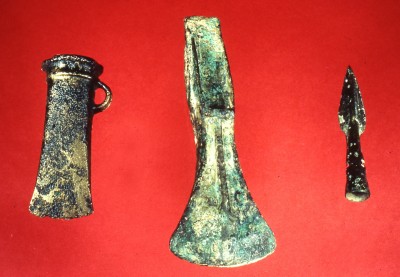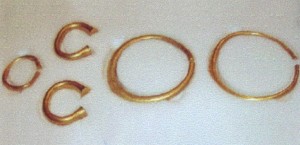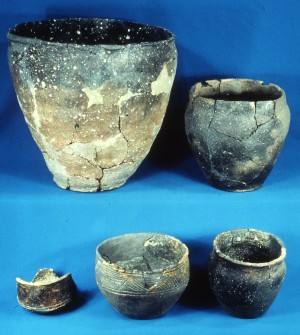The technology for metalworking in copper (bronze is an alloy of copper and tin) and gold appears to have originated in the eastern Mediterranean area in the fourth millennium BC, and seems to have been brought to Britain in about 2000BC.
Copper was mined in north Wales and tin in Cornwall: gold may have come from Ireland or mid Wales. Bronze appears to have been worked and traded by travelling bronze-smiths. A metalworker’s hoard containing bronze axes, spearheads and a sword was found in New Bradwell.
We know little of Bronze Age settlement in the Milton Keynes area: evidence for the period comes mainly from burials in ‘ring ditches’ (ploughed-out burial mounds) in the Ouse and Ouzel valleys. Five have been excavated, at Warren Farm, Milton Keynes village, Cotton Valley and Ravenstone, and many others have been revealed by aerial photography. They normally comprise a crouched burial with grave goods, centrally located within a circular ditch.
The only Bronze Age settlement site yet found in Milton Keynes was at Blue Bridge. Excavations revealed a large circular building, 18.5m in diameter, constructed of three rings of posts, associated with a roughly cobbled yard and a waterhole. The site, which has been dated to the end of the Bronze Age, was from the size of the building of relatively high status.
The presence of pottery types previously only known in south-western and southern Britain may suggest the emergence of long-distance trade.





